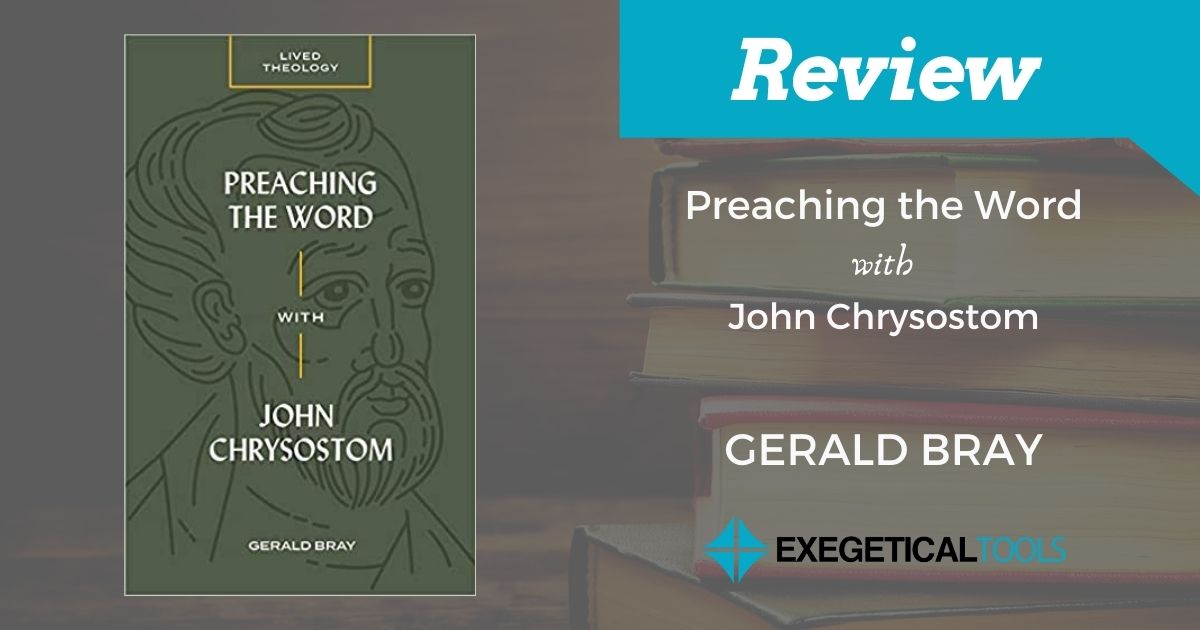Gerald Bray, Preaching the Word with John Chrysostom, Lived Theology (Bellingham, WA: Lexham Press, 2020), 132pp. $12.99 paperback.
Lexham Press has recently launched their Lived Theology series which focuses not on doctrines but the lives of the people behind them. After all, “the eventual success of Trinitarianism in the fourth century was not simply the triumph of an idea but of the biblical convictions and piety of believers like Hilary and Athanasius, Basil of Caesarea and Macarius-Symeon” (xi). As a historical theologian, I was excited to hear this series announced. Since my focus has been on Patristics, I was overjoyed to hear that one of the first entries covered John Chrysostom.
John Chrysostom is perhaps the most famous preacher of antiquity, having earned the name Chrysostom (“golden-mouthed”) about a century after his death. Unfortunately, his reputation has faded somewhat over the years for a variety of reasons. Gerald Bray succinctly explains many of these in his introduction, as he surveys Chrysostom’s life and work.
As one would expect from a scholar of Bray’s caliber, this work is exceptional. He offers impressive detail while maintaining delightful prose. I bet you didn’t know that we have around six hundred expository sermons from Chrysostom, and “that these include 18,000 references or clear allusions” to Scripture (7). Where does one start with such an impressive catalog of works, you might ask? The answer: this book. Bray has you covered. His thorough intro will whet your appetite for Chrysostom, and the following chapters will orient you to his thought. In this work, Bray proposes “to work [his] way through each of these four texts [Genesis 1–3, Gospel of Matthew, Gospel of John, Romans], outlining how John read them himself, how he expounded them to his hearers, and how he applied them to the Christian life” (10).
Bray deftly handles Chrysostom, balancing praise with criticism. Chrysostom is hailed as one who has mastered rhetoric sufficiently enough to be on par with the ancient Athenian Demosthenes (12). Yet he is also strongly anti-Jewish (20). His Christology ought to separate him from the “fictitious ‘Antiochene school’” (22). But his Christological language will often make us uncomfortable when viewed through the lens of Chalcedon (which occurred after his death) (23).
Chrysostom was no dry academic. His heart was for the church, and he would want his work to be useful there more than anywhere else. Bray does an excellent job of respecting this priority by keeping this book short and easily accessible. Greek & Hebrew terminology is transliterated. Notes are infrequent and are included at the end of the book. While there are some technical discussions, Bray typically simplifies these sufficiently so that the reader can track. Where he may occasionally falter in this, it will not impede the reader from understanding the overall point.
This short book is fantastic. It will serve you well if you wish to know more about Chrysostom, preaching in antiquity, or patristic exegesis. In fact, this book would likely make for a very useful supplement in a preaching course. The professor could easily assign sermons from the four passages covered in this book, and then use the book to help guide students through preparation with an eye to the historical reception of the passage.
Buy it now on Amazon.


